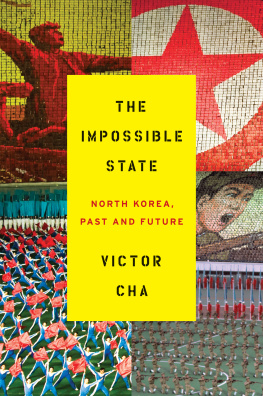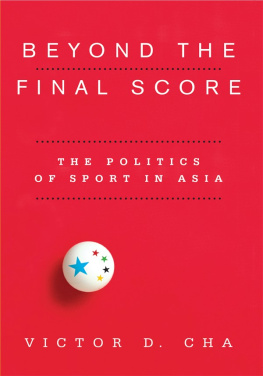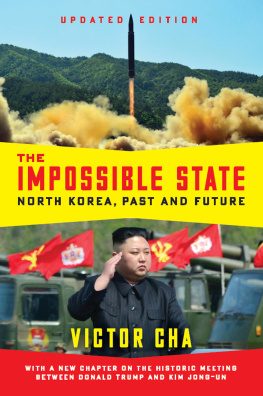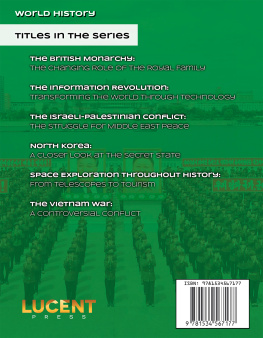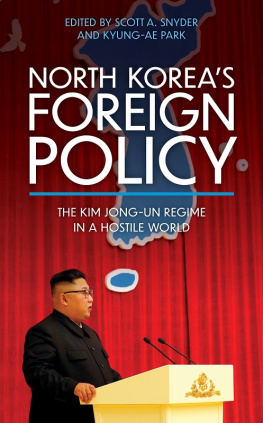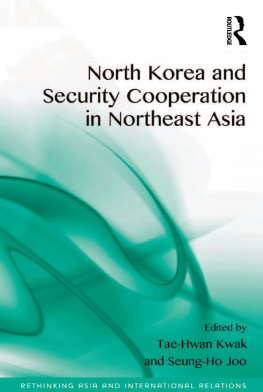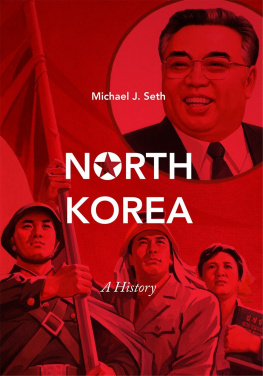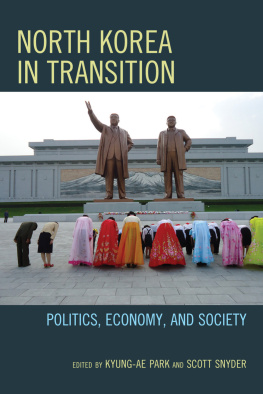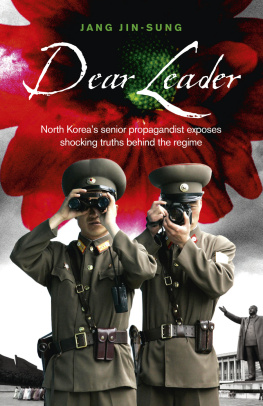THE
IMPOSSIBLE
STATE
NORTH KOREA,
PAST AND FUTURE
VICTOR CHA

For my mother, Soon Ock, and my wife, Hyun Jung
Contents
Romanization of the Korean language has long suffered from a lack of a single, agreed-upon standard for spelling, which is why you will variously see Kim Jong Il, Kim Jong-Il, Kim Jong-il, and Kim Chng-il in the press and academic publications. The book at hand uses something of a mishmash of different standardized Romanization techniques. For names and places that will be familiar to many readers, such as Kim Il-sung, Kim Dae-jung, and Pyongyang, Revised Romanization is used. For names of people and places less familiar to the casual observer, McCune-Reischauer Romanization is used. And for those who arent acquainted with Korean, Chinese, or Japanese names, it bears pointing out that in nearly all cases (with the exception of a few, whose names are widely known and/or used in the reverse order, such as Syngman Rhee), Korean, Chinese, and Japanese names are written in their traditional order, with the surname first and the given name last.
| BDA | Banco Delta Asia |
| BTWC | Biological and Toxin Weapons Convention |
| CCP | Chinese Communist Party |
| CMEA | Council for Mutual Economic Assistance (Comecon) |
| CSIS | Center for Strategic and International Studies |
| CWC | Chemical Weapons Convention |
| DMZ | Demilitarized Zone |
| DNI | Director of National Intelligence (U.S.) |
| DPJ | Democratic Party of Japan |
| DPMO | Defense Prisoner of War/Missing Personnel Office |
| DPRK | Democratic Peoples Republic of Korea (North Korea) |
| EEZ | Exclusive Economic Zone |
| EIU | Economist Intelligence Unit |
| FAO | Food and Agriculture Organization (U.N.) |
| FDR | Flight Data Recorder |
| FROG | Free-Rocket-Over-Ground |
| GDR | German Democratic Republic (East Germany) |
| HEU | Highly Enriched Uranium |
| HFO | Heavy Fuel Oil |
| IAEA | International Atomic Energy Agency |
| ICAO | International Civil Aviation Organization |
| ICBM | Intercontinental Ballistic Missile |
| ICC | International Criminal Court |
| IED | Improvised Explosive Device |
| IOC | International Olympic Committee |
| JFA | Joint Field Activity |
| JRA | Japanese Red Army |
| JSP | Japan Socialist Party |
| KAL | Korean Air Lines |
| KCIA | Korean Central Intelligence Agency (South) |
| KCNA | Korean Central News Agency (North) |
| KDI | Korea Development Institute (South) |
| KEDO | Korean Peninsula Energy Development Organization |
| KINU | Korea Institute for National Unification (South) |
| KOTRA | Korea Trade-Investment Promotion Agency (South) |
| KPA | Korean Peoples Army (North) |
| KWP | Korean Workers Party (North) |
| LDP | Liberal Democratic Party (Japan) |
| LWR | Light-Water Reactor |
| MAC | Military Armistice Commission |
| MTCR | Missile Technology Control Regime |
| NAM | Non-Aligned Movement |
| NBA | National Basketball Association |
| NCAFP | National Committee on American Foreign Policy |
| NDC | National Defense Commission (North Korea) |
| NEACD | Northeast Asian Cooperation Dialogue |
| NPT | Nuclear Non-Proliferation Treaty |
| NSA | National Security Agency (North Korea) |
| NSC | National Security Council (U.S.) |
| NWFZ | Nuclear WeaponsFree Zone |
| ODA | Official Development Assistance |
| OECD | Organisation for Economic Co-operation and Development |
| POW/MIA | Prisoners of War/Missing in Action |
| PUST | Pyongyang University of Science and Technology |
| PRC | Peoples Republic of China |
| PSI | Proliferation Security Initiative |
| ROK | Republic of Korea (South Korea) |
| SAM | Surface-to-Air Missile |
| SDF | Self-Defense Forces (Japan) |
| SEZ | Special Economic Zone |
| STU | Secure Telephone Unit |
| TD-I | Taepodong-I |
| TD-II | Taepodong-II |
| UNHCR | United Nations High Commissioner for Refugees |
| UNSCR | United Nations Security Council Resolution |
| USAID | United States Agency for International Development |
| WHO | World Health Organization |
| WMD | Weapons of Mass Destruction |
Chapter One
Contradictions
W e passed over barren and gray fields as the gulfstream vi touched down on the empty runway of the airport. As the plane taxied on the tarmac, there was no flight traffic to be seen. No baggage carts or fuel trucks shuttling about. It looked as though we were the only arrival or departure of the day. We cruised past two passenger planes with propeller engines, the kind you would see in a 1940s Humphrey Bogart movie. Then the plane turned right and the main terminal came into view, a small 1960s-era building about one-tenth the size of todays international air terminals. Scrawled across the top of the edifice with large, red block letters was pyongyang, written in English and in Hangl (Korean characters). Hanging atop the center of the Sunan international air terminals faade was an oversize portrait of the first leader of the Democratic Peoples Republic of Korea (DPRK, North Korea), Kim Il-sung.
We prepared to deplane into the cool spring air, after the long flight from Elmendorf Air Base in Alaska. It was dusk with an orange glow to the sky, and it was eerily silent: no street sounds, no car horns, no birds. We disembarked one by one, following established security protocol, while two security officers, known as ravens, checked each of our names off the passenger manifest. The ravens then escorted us to a receiving party of North Korean airport staff and foreign ministry officials, who were standing on the tarmac in front of the Kim Il-sung portrait. It was at that point that our security detail turned around and headed back to the plane. I blurted out, Hey, arent you guys coming with us? The agent, looking puzzled at my naive question through his dark sunglasses, responded, No sir, we stay with the plane. Too much sensitive comms equipment aboard to stay overnight in enemy territory. We will transport southbound to Osan [air base in South Korea]. See you on the other side in a few days, sir. The Gulfstream VI was a military plane that the White House provided at the request of New Mexicos then-governor Bill Richardson who had pressed the George W. Bush administration to allow him to visit North Korea. The plane was capable of confidential communications (and probably a whole host of other things I was unaware of). I then remembered that the ravens, who were fully armed, always checked us on and off the plane at our various stops along the way, but the only time they ever separated from the plane was when we overnighted at Elmendorf Air Force Base, a secure facility. I thought to myself, U.S. military plane, invaluable; U.S. government officials, expendable.
Next page
